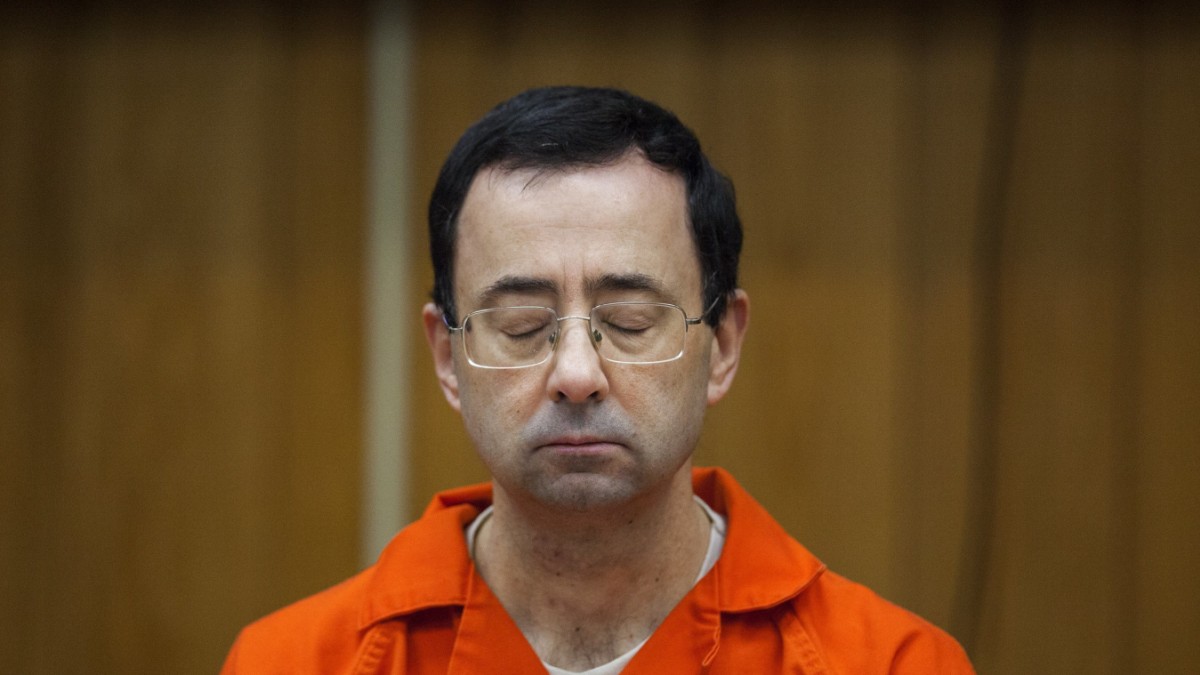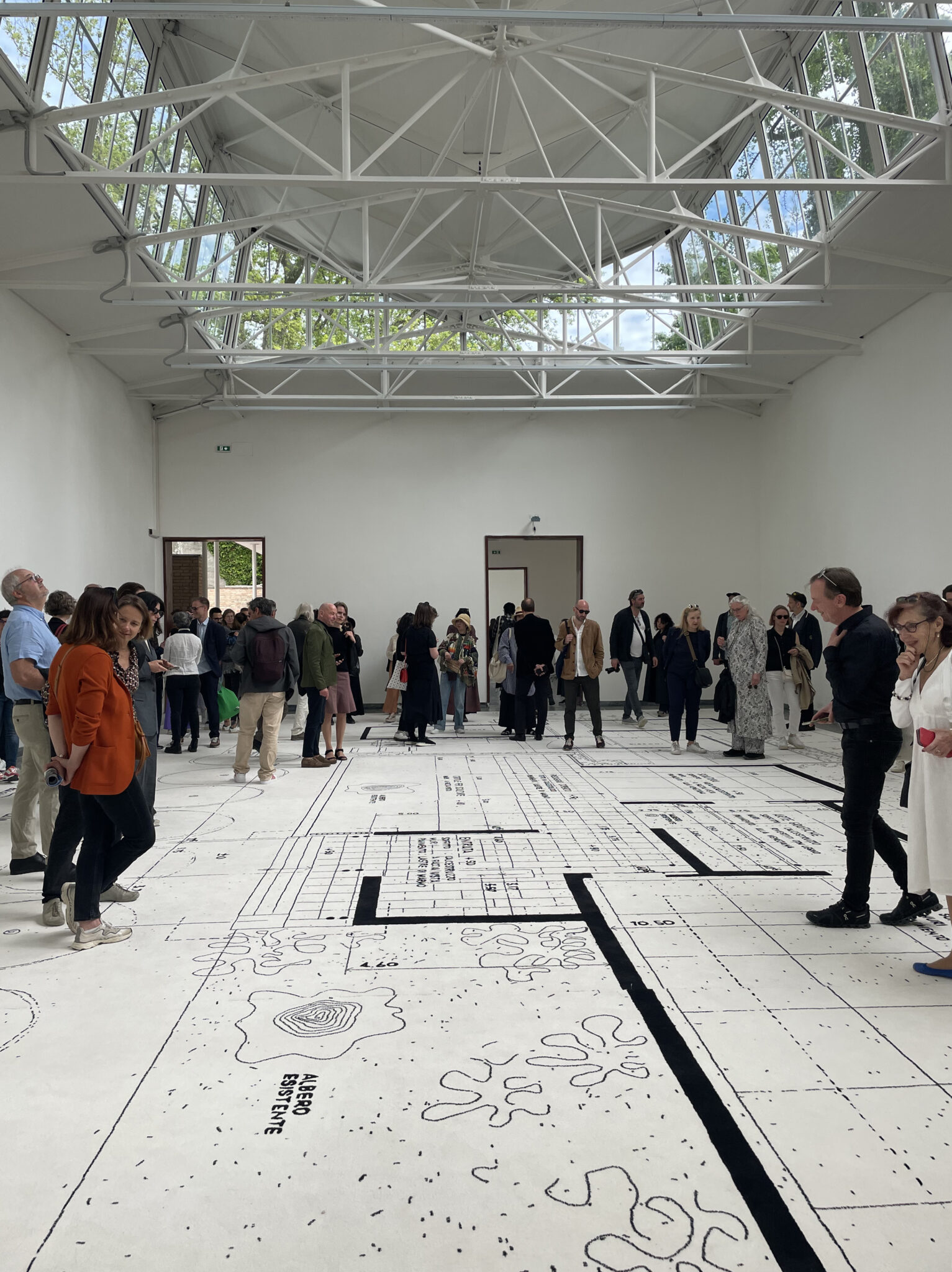“The challenge for the participants was threefold: get rid of expectations, professional habits and masks and bring your true self. Design your work according to two guiding principles: decolonization and decarbonization », with these words curator Leslie Locco describes the idea of Architecture Biennale 2023. In his life he teaches architecture. and doing research – while also writing science fiction. novels. He produced the Biennale through his “African Futures Institute” with three teams of eighteen curators. We were delighted to learn that more than half of the participants were from Africa or the African diaspora and that the gender ratio was balanced. The most of the year for you We have stopped an important architectural exhibition.
A Swiss carpet with the layout of two neighboring buildings. © Martin Zwahlen
The intervention refers to Bruno Giacometti’s original pavilion design. The dividing wall between Venezuela and the Swiss pavilion has been removed again. With the bricks of the wall, two benches were built on the patio around the stumps of dead plane trees. Karin Sander and Philipp Ursprung explained their minimal intervention with the intention of drawing attention to the accidental proximity of the pavilions. In a book written for the event, Philipp Ursprung personalizes the two neighboring buildings and allows them to speak together in a dialogue – unfortunately only in theory. We would have liked to have seen an exchange with neighbors in practice. The second contribution is the white carpet that fills the room with the original layout of the two neighboring buildings. There is a lot of work behind it: producing the carpet, delivering it to Venice and finally transporting it back to a warehouse to store it. We ask important questions about how the curators understood this year’s theme and how the jury decided on it. We are at a loss.

Construction site at a standstill © Kateřina Krupičková
Can Sant Elena’s neighborhood and locals be integrated into the Biennale? With this in mind, the collective AKT, in cooperation with old master Hermann Check, tried to open one half of the pavilion from the other side of the wall. Originally Gardini was a public park. Today it is an exclusive space accessible only during the Biennale. It remains closed for the remaining six months. Despite the detailed analysis of the Giardini and its surroundings presented in the first room, the preservation of the monuments and the Biennale prevent the various proposed solutions for a new approach. These plans are on display in the second room. The cancellation was so sudden that we can now see, in the words of Herman Check, “the standstill of the construction site.” The combination thus achieves an essential computer error. It is respectable. Despite the defeat, the Austrians continue to pursue the issue. Regular events are organized with the people of Sant’ Elena.

“Land Pack” is one of the requests © Martin Zwahlen
“Not for sale!” Creation of an exhibition titled It is a collaboration between municipalities, minorities and students. With the pavilion, they get a mouthpiece to voice their concerns to the world. The issues affect all of us, not just Canada. This includes the right to land, the right to affordable housing, open spaces and the fight against gentrification. “We believe the roots of the housing crisis lie in capitalist and colonial dispossession of people from lands and homes. In Canada, this began with the expropriation of lands from Aboriginal peoples and the commodification of homes, objects of real estate speculation rather than places defined by deep social and cultural ties,” the AAHA collective said. . The concrete allocation then takes place on the top floor: there is room for students from Canada to exchange work with the University of Venice.

Item Shop © Martin Zwahlen
“Opening to Renewal” is an intervention by Arch+, Summacumfemmer and Büro Juliane Greb. A new architectural approach is presented. They address the squat as an important movement. In the 1980s, the scene in Berlin was able to preserve many buildings with little maintenance and reuse. Installation is easy to implement. Last year’s artistic intervention “Relocating a Structure” by Maria Eichhorn was retained. All materials used in the Art Biennale are collected, stocked, stored and available in the pavilion. The pavilion will become a workshop. Local activist groups and German university students will also participate in touch-up and repair workshops with materials found in Venice. The pavilion has various rooms: workshop, material warehouse, meeting room, tea kitchen and washroom with common dry toilet. A new ramp was built to allow heavy goods to be transported in and out of the pavilion and to make the exhibition accessible to all.

Cardini Distillate in the Japanese Pavilion © Kateřina Krupičková
Exciting film screenings about minority groups in England are scheduled at the British Pavilion. The visuals show how customs and traditions shape public space. The Japanese pavilion deals with its immediate environment. Collected materials from Gardini are distilled on the ground floor, which includes steam baths and a Schnapps distillery. You can smell the finished leaves, wood and fruit pieces.
Brazilians show the earth as the most important foundation of our lives. The title of the exhibition is simply “Terra”. All floors and exhibition elements are made of this material. These contrast with the modernist architecture of the pavilion. The migration of local residents during the construction of the capital Brasilia is discussed, as well as projects based on Afro-Brazilian knowledge. The Golden Lion for Best Pavilion went to Brazil – and the UK won the award for Curatorial Work.
Finally, we have a little tip for you: if you need a break and want to get out of the city, we can recommend the “Biogrounds” exhibition on Isola La Certosa, a ferry terminal from Giardini. Three installations can be visited on a walking tour, interspersed between art, architecture, landscape, philosophy and botany. Those involved include Beka & Lemoine, Studio Formafantasma with Emanuele Coccia and Studio Ossidiana. The island is wild and uninhabited. The trail passes through different types of vegetation: wetlands, grasslands and forests. There is a nice bar in front of the ferry terminal. Hello! Architecture Biennale 2023 is definitely worth a visit.
Text: Martin Zwahlen / Architect Basel and Katerina Krupikova

“Communicator. Entrepreneur. Introvert. Passionate problem solver. Organizer. Social media ninja.”





More Stories
Great Britain wants to increase defense spending to 2.5 percent of GDP
SWR and School of the Future / Journalist Frank Seibert looks for new school models in Dresden, Winnipeg (Canada) and Essen
New Law in Britain: Sunak's Rwanda Life Belt